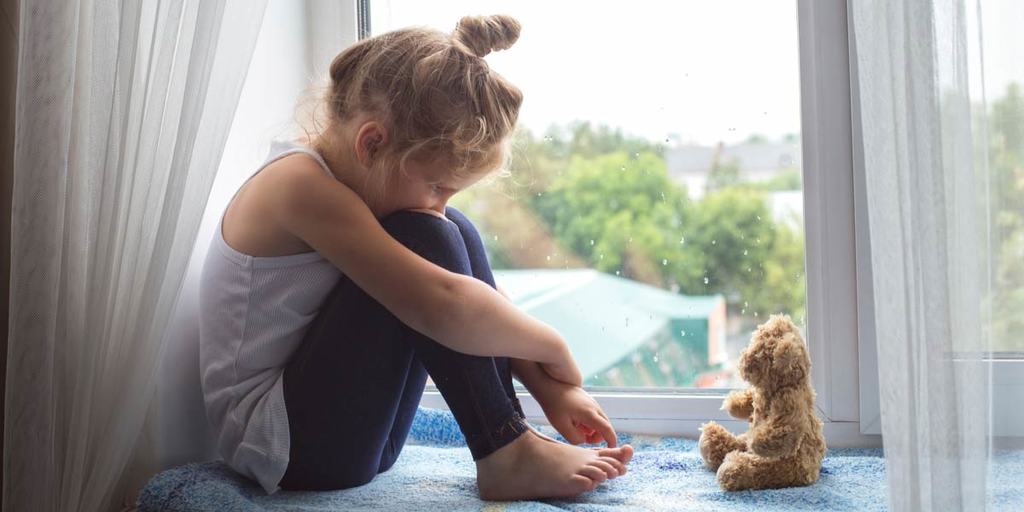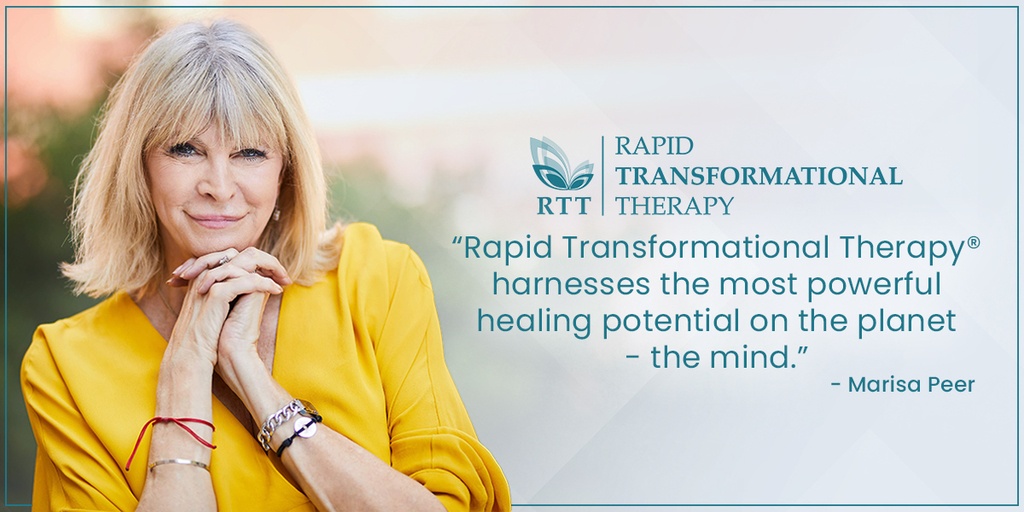Attachment style is a way in which we relate and interact with those important to us. It affects how we choose our partners, how well our relationships progress, and how they end.
Fearful avoidant attachment style, also known as anxious avoidant attachment style, makes you need others very strongly. However, at the same time, you are afraid of being too close to someone. Your relationships, therefore, tend to be turbulent and often dramatic.
It can be agonizing to crave intimacy but feel trapped when you get it. This article will show the path towards dealing with a fearful avoidant attachment style so that you can finally enjoy healthier and fulfilling relationships.
You will learn:
- What fearful avoidant attachment is
- Causes of fearfully avoidant style
- How this attachment style can affect your life
- How to deal with fearful avoidant attachment
What Is Fearful Avoidant Attachment?
Fearful avoidant attachment style means that a person feels both an anxious need for another, and an urge to evade intimacy. These contradicting needs can be felt at the same time. This causes seemingly irrational behavior towards one’s partner. A painful spiral of always approaching and then fleeing, only to be drawn back again characterizes their relationships.
People with fearful avoidant attachment are torn. They tend to be wavering between a desire to form close bonds with others and the fear of getting hurt and betrayed.
For a person with this anxious attachment style, romantic relationships are a source of massive ambivalence. They can come off as clingy and needy. Then, all of a sudden, they run away at the first sign of true intimacy. It can be confusing for both the fearfully avoidant person and their partner.
Avoidance serves as a shield from too much pain. A subconscious belief guides a fearfully avoidant person. It is the conviction that those who are closest to them will leave and hurt them. This is why they get terrified of closeness—the more emotionally invested they become, the more pain they expect to feel once betrayed.
People with a fearful avoidant attachment may show signs such as:
- Feeling conflicted about relationships and people, at the same time wanting and avoiding them
- Tumultuous, chaotic, emotionally explosive relationships
- Seeking out flaws in partners and using them as the reason for ending the relationship
- Clinginess and neediness, as well as fear of not being good enough for the partner
- At the same time, as soon as they are reassured about the partner’s commitment, they withdraw and resist true intimacy
What Causes Fearful Avoidant Attachment Style?

Attachment styles were initially observed and researched during the 1960s by John Bowlby, the founder of the attachment theory. Back then, the theory was directed towards understanding how children attach to their parents.
When parents are responsive and loving, secure attachment forms. However, when parents are abusive, cold and distant, or chaotic in their responses, children become insecurely attached to them. Such an attachment can either manifest itself as emotional avoidance or anxious, dependent behavior.
With time, researchers noticed that it does not end there. Childhood attachment style seems to transfer to our adult relationships as well. In that regard, Freud used to cite Wordsworth: “The Child is father of the Man.”
The original classification of attachment styles, however, did not manage to encapsulate people who were disorganized in their relationships. A small percentage of adults had a combination of both signs of avoidance and anxiety. Those whose parents did not manage to offer a secure response when they were afraid or hurting as children often became fearfully avoidant.
You might remember that your mother, for example, got livid when you fell down at the playground. Instead of being comforted and reassured that it is going to stop hurting, you got even more scared when you looked at her angry face. As a result, your need for consolation was never met. You ended up needing others but also dreading them.
How Fearful Avoidant Attachment Style Can Affect Your Life

As humans, we are naturally wired to seek out companionship—be it friendships or romance. We do need other people in our lives. However, when you are also petrified of closeness, your whole life could be adversely affected by those conflicting needs. Unless you do something about it, that is, and we will show you how.
Unstable and toxic relationships
The most apparent effect of fearful avoidant attachment style is erratic relationships. Because you want but fear affection, your relationships are often a rollercoaster of emotions. Unfortunately, research revealed that anxious avoidant people are also more likely to get involved with violent partners than others.
In that way, the prophecy of being hurt by the one they love gets fulfilled. Our subconsciousness will always find ways to make our beliefs happen. This is why you need help from someone who understands the workings of your subconscious mind. Marisa Peer, a world-renowned therapist and the founder of Rapid Transformation Therapy® (RTT®), deciphered the rules of the mind. Read on to learn how you can use her expertise to work towards healthier, safe relationships, and the areas in your life that are most impacted by fearful avoidant attachment.
Casual sex
A study by two researchers, psychologists Nicolas Favez and Herve Tissot, determined that fearful avoidant attachment style could affect how you approach sex. Casual sex could be a way of avoiding the anxiety that comes with long-term relationships for someone with this attachment style.
According to Favez and Tissot, this is the one attachment style that comes with the greatest psychological and relational risks. Their study found that fearfully avoidant individuals have more sexual partners and are more sexually compliant. Such behavior, however, could bring about immense health problems, as well as social disapproval that could affect self-esteem.
Low self-confidence
Fearfully avoidant people are also low in self-confidence. This is not surprising. As we said earlier, our lives are directed by our subconscious beliefs. You expect to be hurt and dismissed by others. However, you are aware that such an expectation requires a solid justification. Your mind found it in a belief that you are not lovable.
Needless to say, low self-esteem can cause many issues for you along the way. You could, as we already learned, seek toxic, abusive partners who will keep telling you that you are unworthy. Your life could also be affected in other areas. You might not pursue your ambitions and underperform academically and professionally.
Finally, you could end up feeling terrible most of the time, that is, have emotional disturbances.
However, you do not need to live your life, believing that you are not good enough. Marisa Peer developed an entire program dedicated to helping you fall in love with yourself, called I Am Enough.
Emotional disturbances
The combination of a negative view on others (such as “People are hurtful”) and yourself (“I am unworthy of kindness”) often results in a bleak image of the future. You believe that you will either be hurt or be alone all of your life. With such a pessimistic outlook, the perfect storm for depressive disorders occurs.
The research confirmed over and over again—people with a fearful avoidant attachment style are under the heightened risk of developing depression and anxiety. Therefore, your entire life could be held back by your style of attachment—not just your romantic relationships.
However, you do not have to live that way. As we will show you, there are many ways for you to transform and leave the dark clouds behind.
How to Deal With Fearful Avoidant Attachment

Attachment style is the reflection of how we attached to our parents when we were very young. Did you catch that? It is just a reflection. It does not need to have much power over you anymore. Fearful avoidant attachment style is nothing but a mesh of beliefs, memories, and expectations hidden in your subconsciousness.
These can be changed. Here are a few proven ways to do so.
Notice that you might be distorting the reality
As you learned by now, our realities are merely the projection of our inner worlds. This means that who your partner truly is, and who you see through your fearfully avoidant glasses, might not be the same thing. Arm yourself with this knowledge. Use the rules of the mind to your advantage.
Work with your mind. Marisa Peer has spent decades decoding how our minds work and how they create our realities for us.
One such rule is—“What is expected tends to be realized.” When you expect to be hurt, you will be.
For example, if your partner would never hurt you, you probably will subconsciously find a way to get hurt anyway. You might emphasize the partner’s flaws so that you can be gravely disappointed and, from your perspective, betrayed. You could also leave that partner and find another one. One who is not good for you. One that will, indeed, hurt you. Therefore, what you expected, was realized.
Instead of letting your attachment style make use of this rule, take the steering wheel in your hands. Set different expectations. Instead of: “My partner will eventually hurt me,” try, “I can rely on my partner.” You might not be convinced at first, and this is normal.
Nonetheless, with time and repetition, your expectations will change. From that point on, all you need to do is sit back and observe how life changes for the better—seemingly on its own.
Practice setting healthy boundaries
One of the issues that are linked to fearful avoidant attachment is chaotic boundaries. The nature of the style makes you either rush to disclose too much too quickly or to put up high walls with no real reason. What you need are healthy boundaries.
Therefore, the next time you meet someone, try to hold back on revealing your deepest secrets for a while. Make sure that you are fully comfortable with the person first. Then you can show them your vulnerable side.
If you open yourself too quickly, you can become very anxious. You will begin fearing the intimacy and the prospect of getting hurt. It will make you want to run away—again. To avoid this cycle from happening over and over again, pace yourself. If you wait for the trust to build gradually, you will increase your chances of developing a safe relationship. The other side of the coin is then not to run away.
That is not to say that you should reveal nothing at all. Practice building your relationship gradually and work towards closeness.
Let us imagine you went on a date. The conversation steered towards childhood memories. You might have had some traumatic experiences that still affect you to this day.
Fearfully avoidant people might be tempted to either spill out their deepest hurts on a first date, or never speak about their trauma—ever. The golden middle we are proposing would be saying something like: “I had a rough childhood. I’m not ready to speak about it now, but someday I will tell you all about it.”
Therefore, define your boundaries as somewhere in the middle between over-sharing and forever holding your peace.
Refuse to run away
When your relationship starts progressing towards real intimacy, you will feel that well-known dread. You will need to run away. Your mind will begin to rationalize this urge.
Do not yield to your instinct at that point. Your subconsciousness is trying to save you from harm. However, it is operating under a false assumption. It is your job now to recognize that.
You now know that your attachment style came from your past relationship, one with your parents. Your partner is not your parents, obviously. Although your mind generalized the fear into every relationship you may have, you can change that.
Employ your reason. Remind yourself that your fears are irrational. Refuse to run away when the only reason for it is your vague assumption about some future hurt.
Consider reaching out to a therapist

The power that fearful avoidant attachment has over you comes from the fact that it is ingrained into your subconscious. You might have trouble controlling your reactions to triggers that ignite your anxiety and tendency for avoidance. This is why getting a therapist could be the best idea.
Marisa Peer has created a method that could help you, alongside our Rapid Transformation Therapy® (RTT®) certified therapists.
RTT® is a technique that recognizes the significance that you attach to your problems. Then, it uses a combination of therapeutic approaches that open the door to your subconscious and reprograms your mind.
With an RTT® therapist supporting and gently guiding you , you explore and understand the meaning and interpretation of different events that could be feeding your anxiety and need for avoiding intimacy.
So, book a call to connect with one of the RTT® experienced therapists who specialize in relationship issues and insecure attachment. They could help you tap into the healing potential
Try Marisa Peer’s Relationship Bundle
Arm yourself with Marisa Peer’s specialized—Dating and Relationships Bundle to rebuild your approach to love.
The Dating and Relationships self-hypnosis audio bundle can help you release any negative beliefs about romance. These are the erroneous convictions we spoke about in this article. They have been holding you back from the intimacy and connection you so deserve.
The bundle consists of three modules – #1: Attract Your Perfect Relationship, #2: Boost Your Confidence & Self Esteem, and #3: Lovability. These audios will help you address the main hindrances in your subconscious.
How Do You Date Someone With Fearful Avoidant Attachment?

Being on the receiving end of relationship anxiety and the resulting ‘pull-push” behavior can be tough. Nonetheless, when you love such a person, you will want to help them feel secure with you. You can help them by understanding the attachment style they are burdened with.
In other words, be prepared for this dynamic until your partner manages to grasp control over their insecurities. Patience and reassurance will be your best weapons against fear. Go slowly and do not push for closeness.
Reassure them that you are there to stay. Calm their doubts, and unwearyingly prove your commitment. And then prepare for the swing in the other direction.
Try to respect their instinctual reaction to the closeness you worked towards. They will try to run away. They might cause a quarrel and use it as an excuse to leave. However, try not to play along. Tell them that you will be there waiting ever so patiently. Then exit the argument, and give them some space. With time, you can dull the edges of their fears and soothe the storm when it reoccurs.
Show them this article and talk to them about RTT® and Marisa Peer. Support them in getting help and becoming free from the tormenting cycle of needing you but fearing pain.
Do you need support?
Some people have had a secure attachment style all their lives. They were never burdened by the overwhelming insecurity in relationships as you were. However, the good news is that you can rewire your mind. You can stop fearing love.
You don’t need to face anything alone. If you have concerns about yourself or a loved one, you can easily get in touch with one of our fully-certified RTT® therapists.
What is RTT®?

RTT® is a ground-breaking therapeutic method developed by world-renowned therapist Marisa Peer, based on her extensive knowledge and experience over the course of 30 years. RTT® combines the very best elements of NLP, CBT, Hypnotherapy, and more, into one method completely focused on providing support and change.
How do I get in touch with an RTT® Therapist?
That’s easy. Simply click the banner below to be taken to a portal where you can request more information, and to be put in touch with a fully certified RTT® therapist. Open yourself to love and healthy relationships—right now.




